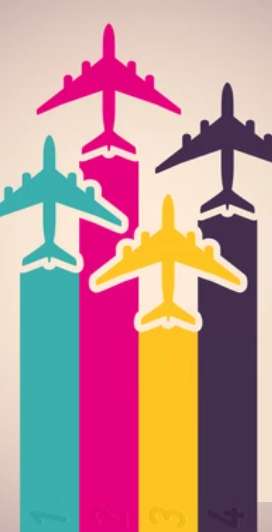Gulf Voice of Aviation
Military Aviation
Military aviation is the use of aircraft and other flying machines for the
purposes of conducting or enabling warfare, including national airlift (cargo)
capacity to provide logistical supply to forces stationed in a theater or along
a front. Air power includes the national means of conducting such warfare
including the intersection of transport and war craft. The wide variety of
military aircraft includes bombers, fighters, fighter bombers, transports,
trainers, and reconnaissance aircraft. These varied types of aircraft allow for
the completion of a wide variety of objectives.
Types of military aircraft
Ground-attack aircraft can be used to provide support for friendly ground troops. Some are able to carry conventional or nuclear weapons far behind enemy lines to strike priority ground targets. Attack helicopters attack enemy armor and provide close air support for ground troops.
Bombers are normally larger, heavier, and less maneuverable than fighter aircraft. They are capable of carrying large payloads of bombs. Bombers are used almost exclusively for ground attacks and not fast or agile enough to take on enemy fighters head-to-head. A few have a single engine and require one pilot to operate and others have two or more engines and require crews of two or more.
The main role of Fighters is destroying enemy aircraft in air-to-air combat. Many are fast and highly maneuverable. They are capable of carrying a variety of weapons, including machine guns and guided missiles. Many modern fighters can attack from a great distance.
A Multirole combat aircraft can be a fighter or a bomber, depending on what the mission calls for. This term normally only applies to fixed-wing aircraft.
Reconnaissance aircraft are primarily used to gather intelligence. They are equipped with photographic, infrared, radar, and television sensors. Some are equipped with special electronic gear for detecting submarines, such as sonar, and others can give early warnings of enemy approach. This role is increasingly being filled by spy satellites and unmanned aerial vehicles.
Military transport aircraft are primarily used to transport troops and supplies. Cargo can be attached to pallets for quick unloading. Cargo also may be discharged from flying aircraft on parachutes. Also included in this category are aerial tankers; these planes can refuel other aircraft while in flight. Helicopters and gliders can transport troops and supplies to areas where other aircraft would be unable to land.
Experimental aircraft aircraft are designed in order to test advanced
aerodynamic, structural, avionic, or propulsion concepts. These are usually well
instrumented, with performance data telemetered on radio-frequency data links to
ground stations located at the test ranges where they are flown.
In case you're interested in knowing more info on live casino, stop by https://www.live-croupier.org
The world is changing, there are signs that bank notes might disappear, digital currency like bitcoin, now can buy a lot of stuff online for example Visit https://smokersunit.com to find out more regarding cigarette online with bitcoin you will be able to spend your bitcoints any time and enjoy free delivary and absolutly cashless transaction for your smoking pleasure.

10 Things In Aviation During 2050
Innovative solutions for the climate: halving CO² emissions & reducing aircraft noise
The future of the aviation industry lies in electric flying
Fuel cells and regenerative energies could make flying emission-free
Aviation industry: Future with aviation fuel from biomass & solar power
Freight and passenger numbers will continue to rise despite "flight shame"
The future of aviation - futuristic cabin interiors
Taxis of the skies - already a reality in 2050?
ARTS - We design the future of aviation
center>